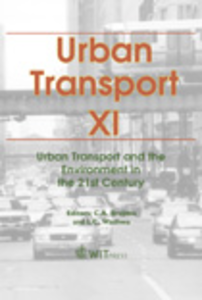Enhancing urban sustainability through integrated transport planning in three largest Australian cities
Wadhwa, Lal C. (2005) Enhancing urban sustainability through integrated transport planning in three largest Australian cities. In: Brebbia, C.A., and Wadhwa, L.C., (eds.) Urban Transport XI: urban transport and the environment in the 21st Century. Advances in Transport, 77 . WIT Press, Southampton, UK, pp. 333-342.
|
PDF (Published Version)
- Published Version
Restricted to Repository staff only |
||
![[img]](https://researchonline.jcu.edu.au/7496/2.hassmallThumbnailVersion/7496_Wadhwa_2005.jpg)
|
Image (JPEG) (Front Cover)
- Cover Image
Download (16kB) |
Abstract
The traditional urban transport planning process has given rise to unsustainable transport systems.
Higher car ownership, more and longer trips and less public transport are the direct outcomes of traditional transport planning.
This has brought about astronomical community costs in terms of road fatalities and injuries, congestion, massive capital investment and environmental degradation. The recent transport plans in metropolitan cities in Australia have been developed within the integrated transport and land use framework and are a crucial part of the strategic plans for improving the quality of life and liveability in the cities.
Key sets of goals aimed at enhancing sustainability include (a) increased share of public transport modes, cycling and walking and (b) improving air quality and reducing greenhouse gas emissions.
To ensure the achievement of these objectives, massive investments and expansion of public transport systems are being pursued.
In this paper, it is aimed to examine the action plans for achieving the key objective of sustainability.
The discussion focuses on targets, plans and measures for achieving the desired outcomes as well as the alignment of transport plans with related environmental management strategies for the cities.
These are brought out through detailed examination and evaluation of the recent urban transport plans of three largest Australian cities (Brisbane 2002-16), Melbourne (2030) and Sydney (2010).



